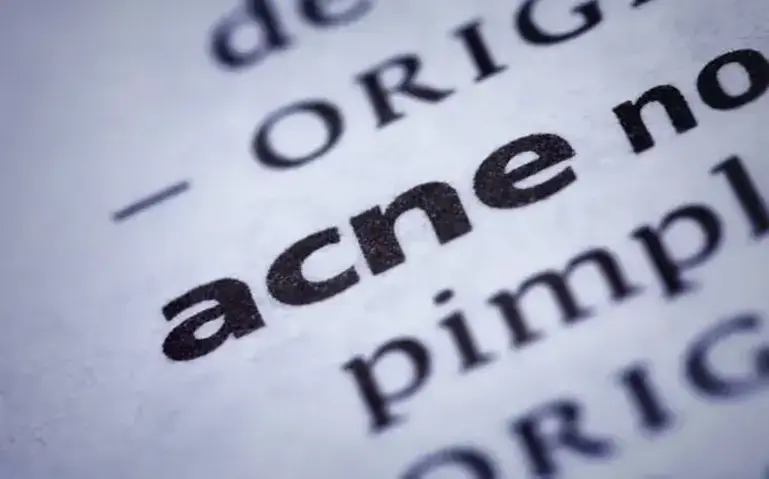Acne is considered a progressive skin condition, occurring in a vast number of people all over the world without respect to gender, age, race, social status, or other factors. It comes in when the clogging of pores with oil, dead skin cells, and other impurities happens, forming spots like pimples, blackheads, or whiteheads. The acne condition is linked to teenagers as it is triggered due to hormonal changes. However, it can dig its way to adult age and may require unique treatments compared to adolescents.
Types of Acne:
In treatment, we need to be aware of the numerous types encountered, as each has unique, specific characteristics and distinct treatment approaches. Here, we delve into the primary forms:
- Comedonal Acne
- Inflammatory Acne
- Cystic Acne
1. Comedonal Acne
Comedones-acne accumulates in the trunk and the face where blackheads and whiteheads predominate. “these clogged pores often result in comedones, where sebum and dead skin cells accumulate.” Even though generally very insignificant (may develop into more severe forms), comedonal acne may remain untreated, at which point any treatment could become more challenging.
Causes:
Comedonal-type is caused by an overproduction of oils. It is an accumulation of dead skin cells at the base of the pores, which restricts the opening of the pores.
Benefits:
- Help unclog pores
- Increase skin cell turnover
Side Effects:
- Dryness
- Irritation
- Over-sensitivity to the sun could be another symptom of the treatment.
Treatment Medication:
Dermatologists usually start with lower concentrations of active ingredients to avoid unwanted side effects. The concentration is then gradually elevated as the patient tolerates it.
General Public Review:
Many of these people discover practical non-surgical recommendations for comedonal acne in the form of regular home-based routines and over-the-counter products. However, for those patients whose illnesses do not improve significantly or vice versa with acute conditions, professional help may bring adequate treatment solutions.
2. Inflammatory Acne
Such a signature of acne is through inflammatory bumps, mainly painful red lesions consisting of papules, pustules, or nodules. It is due to the colonization of bacteria and the entry of these bacteria into the pores, which causes the immune reaction and, thus, inflammation.
Causes:
Inflammatory acne happens when these bacteria, the aggressive cultivator of Propionibacterium acnes, reside in and develop within blocked follicles, eventually leading to infection and inflammation.
Benefits:
Management strategies for inflammatory acne that use topical or oral drugs with anti-inflammatory and antibacterial features, such as benzoyl peroxide, antibiotics, and oral contraceptives.
Side Effects:
- Dryness
- Peeling
- Redness
- Gastrointestinal disturbances
- Systemic side effects
Treatment Medication:
Choosing the proper treatment for a patient requiring an individualized therapeutic approach and the combination of different treatment modalities is among the competencies of a well-established dermatologist.
General Public Review:
Despite the reported success of common acne treatments for most patients, some may require more invasive therapy, such as isotretinoin therapy, when this is severe or is not responding to standard treatment.
3. Cystic Acne:
Cynical acne is the most severe form. They are associated with extremely painful carved nodules or cysts deep beneath the skin. These lesions, which, especially after healing, result in persistent scars, can significantly affect the affected patient’s self-esteem and quality of life.
Causes:
Cystic acne emerges in the deeper layers of the dermis when obstruction and infection go below skin level, causing cysts and nodules that are hard to heal and often leave scars.
Benefits:
Acne is usually the best approach tackled by a combination of factors, including isotretinoin tablets, occasionally steroid injections for urgent situations, and the options of chemical peels or laser procedures for scarring traces.
Side Effects:
- Potential side effects
- Dryness
- Joint pain
- Mood swings to weight loss (due to appetite loss)
- Pigmentation abnormalities
Treatment Medication:
Because cystic acne is very complicated and severe, doctors should constantly monitor the patients and make the necessary changes in dosage and duration of treatment based on each patient’s reaction and endurance.
General Public Review:
While it could be a very long and arduous path for people with cystic acne to achieve normal skin, people should not give up and comply with their pigmentation to mitigate both physical and psychological symptoms.
Conclusion
Understanding treatment, including options, assists people in making educated decisions regarding the infections of their skin. Different types and advantages of the method assist people in deciding what is the best and getting professional assistance.
Read more…
Peptides: Types, Uses, Benefits, and Side effects
Fat Loss Agents: types, uses, benefits, and side effects
Growth Hormones: types, uses, benefits, and side effects
Oral Anabolic Steroids: Types, Uses, Benefits, and Side Effects
